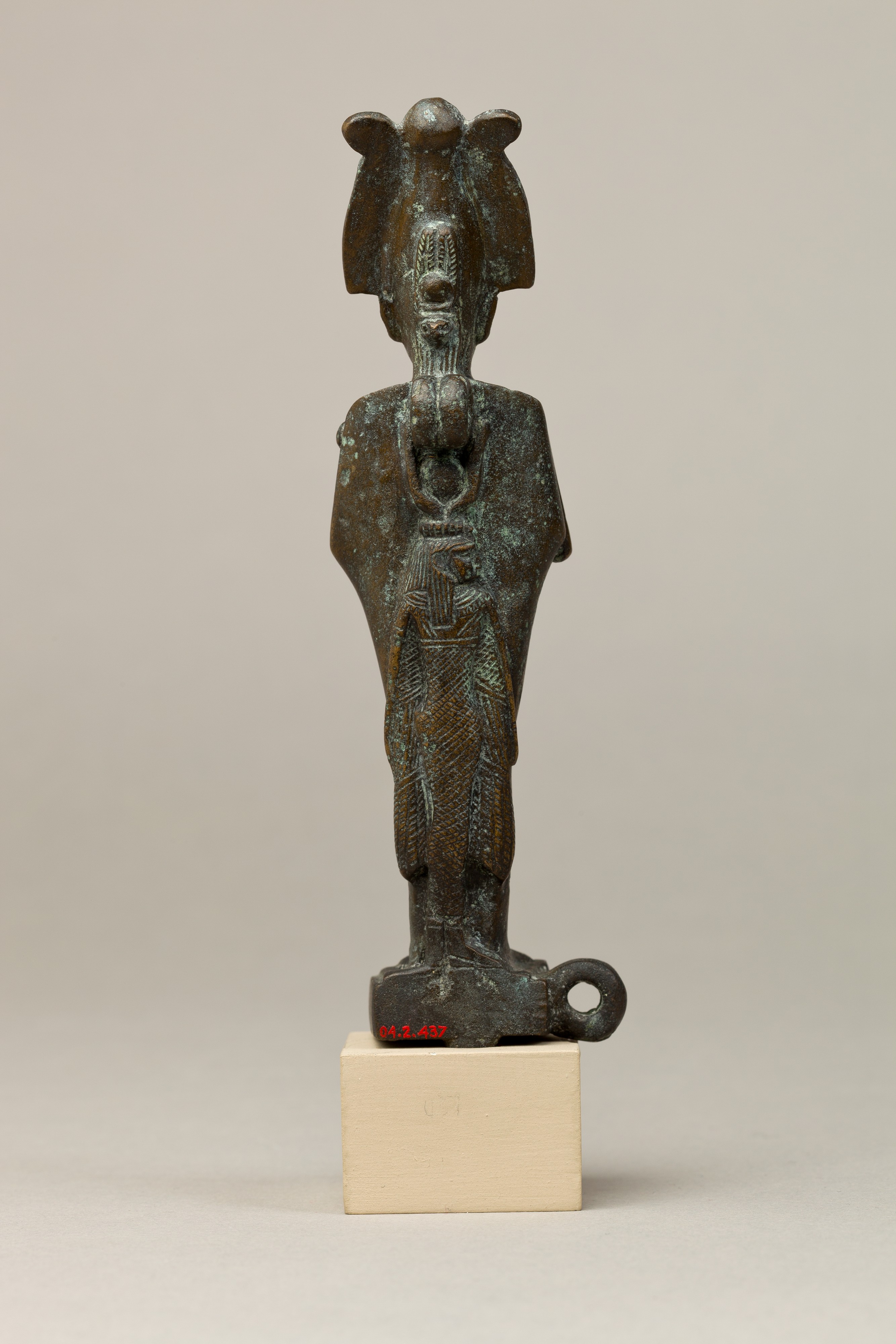Osiris
Late Period–Ptolemaic Period
Osiris, foremost of the Egyptian funerary gods and ruler of the underworld, stands upright in a close-fitting mummiform garment. The garment hugs the contours of his arms and buttocks and has a stiff upper edge along the back of the neck, a feature that occurs with some regularity on this garment, but one with an unclear meaning. He holds the royal crook and flail with his hands posed asymmetrically.
The craftsmanship of the piece, despite its small size, is intricate, with delicately but clearly rendered striations on the crown feathers, a defined chin strap and beard, a detailed broad collar, and the decorated crook and flail. The elaboration continues on the back, with a back pillar in the form of Isis with wings – a figuration of Isis that protects and shelters Osiris. Above the suspension loop rests a falcon head wearing double plumes and a sun disk. Another curious feature is the presence of not one, but two suspension loops, one at the neck and one on the base, in addition to the regular tang.
In fact, this piece is an excellent example of how a few particular characteristics tend to appear together on some Osiris figures: namely, the double loops and the decorated back pillar. Each feature can and does appear on its own, but their tendency to group together is striking; perhaps it is an innovation of a particular workshop, or signals a certain ritual context for the statuette.
In general, Osiris statuettes were some of the most abundant temple offerings in Egypt by the first millennium B.C., reflecting both the god’s importance and changing cult practices that spurred the wide-scale dedication of deity statuettes. Many statues of Osiris were offered in temples and shrines belonging to him, but they have also been found in other contexts, for example near temples and shrines honoring other prominent deities or in animal necropoleis.
This image cannot be enlarged, viewed at full screen, or downloaded.
This artwork is meant to be viewed from right to left. Scroll left to view more.





